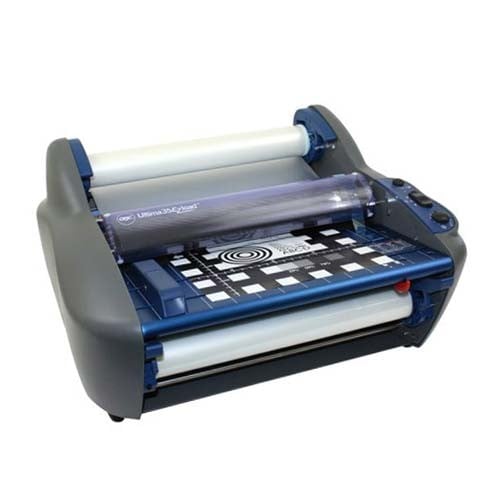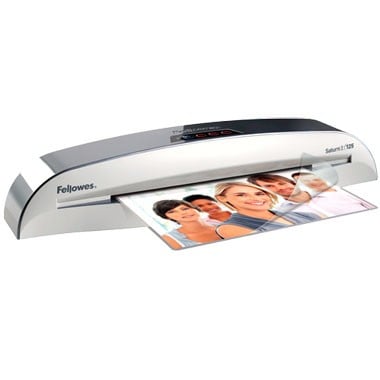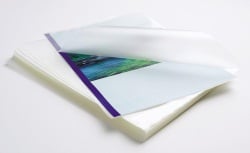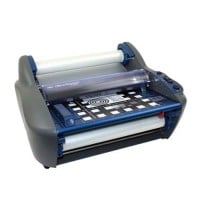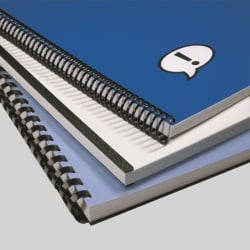MyBinding Knowledge Base
- Binding (248 Article)
- General Binding (42)
- Plastic Comb Binding (57)
- Fastback Binding (59)
- Perfect Binding (2)
- Modular Punching (8)
- Zipbind (3)
- Twin Loop Wire (13)
- Coil Binding (22)
- Thermal Binding (14)
- Strip Binding (1)
- VeloBind (4)
- Binding Covers (14)
- Proclick Binding (10)
- SureBind (4)
- Screw Post (2)
- Hole Punches (2)
- Staplers (4)
- Komtrak Insprial Binding (2)
- Paper (1)
- Rhin-O-Tuff (5)
- Binding Machines Comparison (17)
- Laminating (109 Article)
- General Laminating (26)
- Roll Lamination (16)
- Pouch Lamination (36)
- Pouch Board Laminator (3)
- School Laminator (3)
- Foil Laminating (3)
- Royal Sovereign Laminators (10)
- Laminators Comparison (3)
- Boards (11 Article)
- Bulletin Boards (3)
- Whiteboards (5)
- Chalkboards (1)
- Paper Shredders (44 Article)
- General Shredding (35)
- Industrial Shredders (1)
- Cross-Cut Shredders (2)
- Cardboard Shredders (1)
- Multimedia Shredders (1)
- Personal Shredders (1)
- High Security Shredders (2)
- Ring Binders (9 Article)
- Specialty Binders (2)
- Reinforced Paper (1)
- Health Care Punched Paper (1)
- Perforated Paper (2)
- View Binders (1)
- Index Tabs (9 Article)
- Index Tab Dividers (2)
- Copier Tabs (4)
- Pocket Folders (1)
- Custom Index Tabs (1)
- Pre-Printed Index Tabs (1)
- Paper Handling (37 Article)
- Paper Folders (9)
- Paper Joggers (2)
- Guillotine Cutters (4)
- Rotary Trimmer (3)
- Electronic Paper Cutters (1)
- Corner Rounders (2)
- Paper Scoring (2)
- Paper Drill (2)
- Booklet Makers (3)
- Stack Cutters (1)
- Paper Handling Equipment Comparison (5)
- ID Accessories (12 Article)
- Badge Holder (1)
- Lanyards (8)
- Badge Reels (1)
receive
$5off
*On order $25 or more.
I am having trouble with my fastback binding machine, what should I do?
If you have a Powis Parker Fastback model 8, model 8x or model 9 and are having problems with binding quality this article is for you. It is designed to identify some of the most common problems faced by users of these machines and will help you to correct them. Although the list of problems in this article is by no means exhaustive it does cover the most common Powis Parker Fastback quality problems faced by users of models 8, 8x and 9.
Problem #1: The Spine Is Not Square
- The LX strip may not have been folded to a complete 90 degree angle. The better that you fold your strip the more square the spine of your book will be.
- After binding, make sure that the book is placed in the cooling rack and allowed to cool for at least ten minutes. During the first five minutes after the binding cycle is completed, the glue inside the spine is still hot and pliable. Attempting to use your book, open the pages or allowing the book to cool while laying down can sometimes cause your spine to form incorrectly resulting in a bind that is not square.
Problem #2: The Pages Protrude Past The Strip Or The Edges Of The Pages Are Not Even 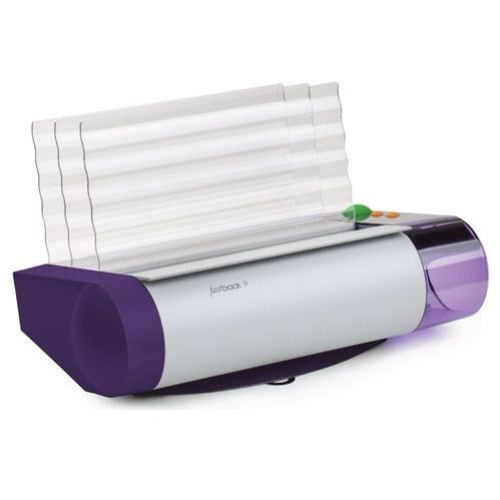
- This problem is often the result of not properly jogging your book block before the binding process begins. It is extremely important to tap the top and left sides of the pages of your book while they are in the binding recess of your Fastback 9 machine. If the pages of your document are not completely flush on the top and sides when you begin the binding cycle your finished document will not be flush.
- ages may protrude past the edge of the strip if you are not careful to make sure that the edge of your pages is lined up with the edge of the strip. The easiest way to accomplish this is to make sure that both your strip and the pages of your book are slid all the way to the right side of your Fastback binding machine. This allows you to use the side of the binding recess to align your book.
Problem #3: The Bind Quality Is Unsatisfactory; Pages Are Separating From Your Strip; There Are Gaps In The Pages Where The Strip Can Be Seen; Or There Is Thermal Plastic Adhesive Leakage.
- The most common cause of these problems is that the Fastback machine is not set to the correct type of binding cycle for the type of strip that you are using. Your Fastback binding machine will have specific settings for running LX Strips, LX CP Strips, HalfBack Covers, Perfectback LF Strips and Perfectback PS strips. It also has a setting for editing documents. Check to make sure that you are using the correct setting for your book.
- It is possible that there is adhesive buildup on the heating plate of your machine. It is a good idea to check this and if necessary remove any built up adhesive using a dry lint free cloth. For safety, be sure to only clean your machine when it is cool and unplugged.
- If you have checked for excess glue and are sure that your machine is set to the correct setting it is possible that you may need a service call to further troubleshoot this problem. There may be an issue with a sensor inside your machine or with the heating or clamping unit. These are not repairs that can be completed by end users.
Problem #4: The Pages Are Not Adhering To The Strip Very Well (Some Paper Stocks And Some Heavy CoverMaterial Can Be Difficult To Bind
- The bind may be improved by increasing the Spine bind time in the Setting Menu.
- If you take a piece of sandpaper and roughen the binding edge of your book block you may get better adhesion between the glue and the edge of your book.
- You may want to consider placing a few staples very close to the edge of your book. These staples will be hidden by the binding tape and will ensure that none of the pages fall out. Just be sure to use flat cinch staples.
- You may want to consider purchasing the Powis Parker Edge splitter for higher volume applications. The edge splitter was specifically designed to solve this problem but is fairly expensive for low volume users.
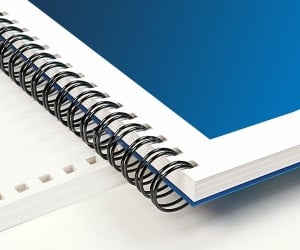
< Over the years, a number of customers have asked me whether they can use twin loop wire with their plastic comb binding machine. These customers often don’t want to have to buy a brand new machine but like the look and feel of twin loop wire binding. However, the answer to their question isn’t as simple as it seems. You see, they actually do make twin loop wire that is designed to work with the plastic comb binding hole pattern. With that said, if you want to use these wires you are going to need a way to close the wires. What is Spiral-O Wire? Let me explain a little bit more…There is a product that we carry called Spiral-O Wire. This wire has 19 loops and is designed to work with the hole pattern from a plastic comb binding machine. Spiral-O Wire is sometimes called Wire Combs or Ibico Wire and was originally designed for use with some of the older Ibico binding machines. A number of the older Ibico plastic comb binding machines also included a twin loop wire closer on the front of them to allow users to use both plastic combs and wire. This 19 loop wire was designed for this purpose. What Equipment is Needed? As the Ibico brand has been phased out by GBC and all of the older Ibico plastic binding machines have been replaced with new models, they no longer have the twin loop wire closer on the front of them. This presents a problem in trying to use these spiral-o wires since you can’t use the wires without a way to close them. One of the only options left is to purchase a Twin Loop wire closer. However, since twin loop wire closers are not incredibly cheap this option usually only appeals to users who have larger electric plastic comb binding machines. Otherwise, it is often advisable to simply buy a low end 3:1 pitch twin loop wire binding machine (the supplies are cheaper). This being said, if you have one of the older Ibico binding machines that has a wire closer included you are in luck. The Spiral-O binding supplies that we carry will work perfectly with your machine and you will be able to use both plastic combs and wire depending on your needs. These Spiral-O binding supplies are available in Black, Silver, White, Blue and Red and in sizes up to 1″ in diameter. If you aren’t sure what type of wire binding supplies that you need to work with your machine simply give us a call. Our trained sales representatives will be glad to help you find the correct supplies for use with your machine.(Read More)
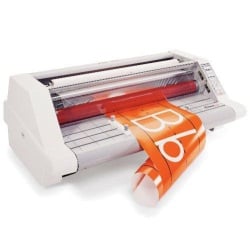

Loading...


